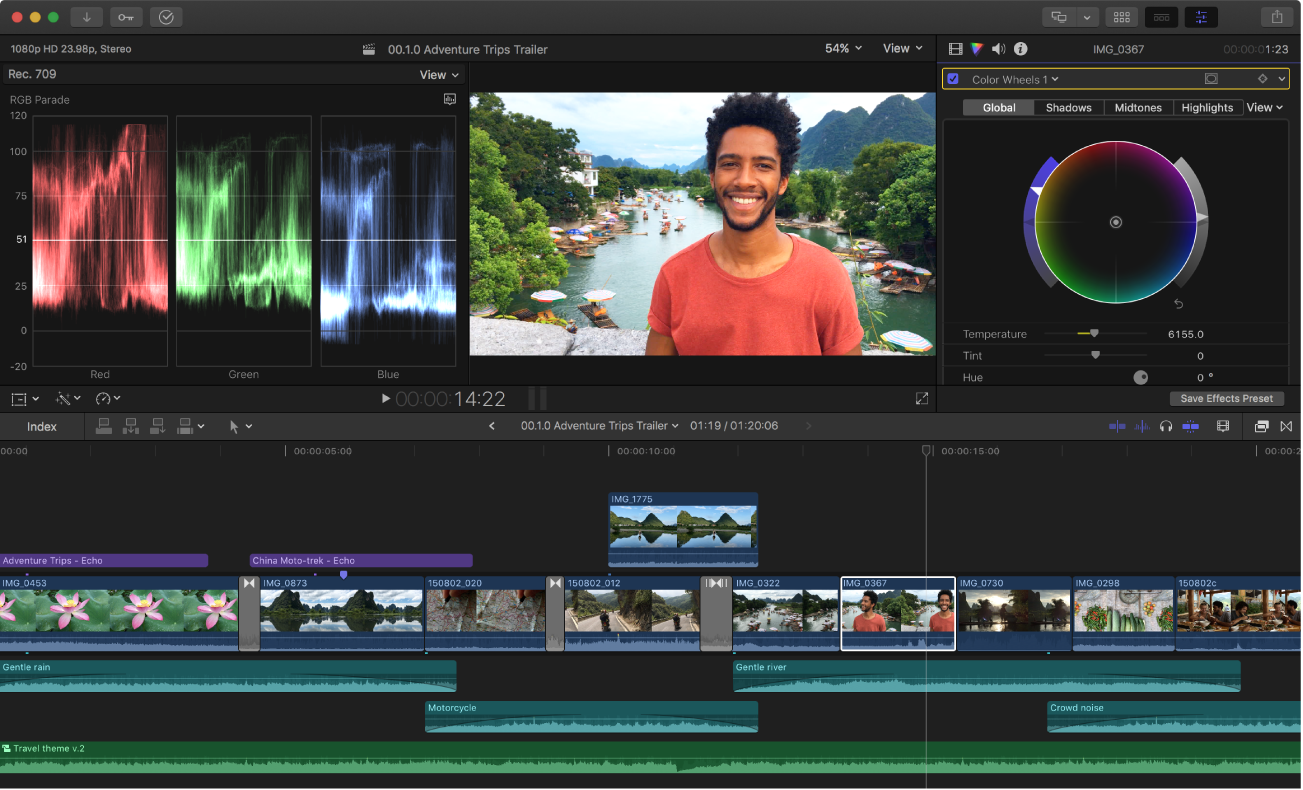
Image data acquired by sensors – either film or electronic image sensors – must be transformed from the acquired values to new values that are appropriate for color reproduction or display. The term white balance is called that way due to the nature of the adjustment in which colors are adjusted to make a white object (such as a piece of paper or a wall) appear white and not bluish or reddish. Generalized versions of color balance are used to correct colors other than neutrals or to deliberately change them for effect. Color balance changes the overall mixture of colors in an image and is used for color correction.

Hence, the general method is sometimes called gray balance, neutral balance, or white balance. An important goal of this adjustment is to render specific colors – particularly neutral colors – correctly.

In photography and image processing, color balance is the global adjustment of the intensities of the colors (typically red, green, and blue primary colors). The right half shows the photo adjusted to make a gray surface neutral in the same light. Tags : entertainment, music, sound, film, television, movies, post production, film industry.The left half shows the photo as it came from the digital camera. Formosa Group has five unique divisions – Features, Broadcast, Music, Interactive and Commercials – and seven locations in the greater Los Angeles area. It is home to some of the most creative and well-respected sound artists in the entertainment industry today. Among its many divisions, Formosa Group offers independent and studio filmmakers and content creators services including sound supervision, editorial, re-recording mixing, and music editorial for film, broadcast and other platforms. After a chance meeting with an AFI student, Hay discovered his ultimate passion, creating a sound for moving pictures.įormosa Group (is a full-service post-production sound company comprised of award-winning talent. With a BA in Music Production & Engineering from Berklee College of Music, Hay spent the first years of his career working with music industry icons such as Slayer, Love & Rockets, and Aimee Mann, as well as local LA favorites Maimou and Raf Green.

Hay’s lifelong passion for film is rooted in the dynamic relationship between picture and sound. He continued saying, “Being part of the storytelling process, breathing life into a mix is a thrill I don’t think I will ever grow tired of.” When asked about moving forward as the newest member of the Formosa Group’s thriving Features team, Hay commented, “I have long been an admirer of so much of the work crafted by Formosa’s exceptional talent that it is truly a privilege to be able to play in the same sandbox as all these incredibly talented folks”. Hay is best known for his riveting work on films such as “Blind spotting,” “The Florida Project,” “Death Note,” “Blair Witch,” “Like Crazy,” and more. “His creativity, versatility and experience epitomize excellence and reinforce Formosa’s commitment to sound with vision.” “We are delighted that Andy has joined Formosa Group,” stated Formosa Group’s CEO, Robert C. Hay will be working with Formosa Group’s flourishing ensemble of some of the film’s most iconic sound experts.

Hollywood, () – Formosa Group, an industry leader and top creative innovator in post-production sound, revealed today that acclaimed supervising sound editor, sound designer and re-recording sound mixer Andy Hay will be joining Formosa Group’s Features team. Supervising Sound Editor/Sound Designer/Re-Recording Mixer Andy Hay Signs With Formosa Group’s Features Division. Formosa Group Adds New Talent To Features Division.


 0 kommentar(er)
0 kommentar(er)
